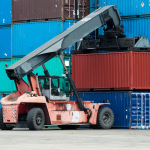
What Is a Milk Run in Logistics?
Like most business leaders, you’re probably always on the lookout for ways to make your logistics processes more efficient. One method that can significantly improve your operations is the milk run. But what is a milk run, and how does it benefit your business? Here’s everything you need to know.
What Is a Milk Run?
A milk run is a delivery route that involves collecting or delivering goods from multiple suppliers or to various customers in a single trip. This method can be more efficient than traditional point-to-point deliveries, but it requires careful planning and coordination.
The term originates from the dairy industry, where milkmen would follow a specific route to collect milk from several farms and deliver it to a central processing facility. A milk run in logistics works similarly. Instead of making separate trips for each supplier or customer, a single vehicle follows a planned route to pick up or drop off goods.
There are a few different ways to structure your milk run. One driver can pick up similar items (i.e., grain) from multiple providers on a single trip and drop off all of the cargo at your facility. Alternatively, they could pick up different types of freight from various shippers.
Milk runs can help you cut down on logistics costs and make the most of available transportation resources. However, the route-planning process is exceedingly complex.
Benefits of a Milk Run
A milk run can provide multiple advantages:
Cost Savings
One of the primary benefits of a milk run is cost savings. By consolidating multiple deliveries or pickups into a single trip, you can reduce fuel consumption and labor costs. You’ll also cut back on vehicle wear and tear. Pooling your resources can lead to huge financial savings and free up capital for future business growth.
Improved Efficiency
Milk runs streamline your logistics processes by minimizing the number of trips needed to move goods. Making fewer trips saves time and ensures that your resources are used more efficiently.
Imagine that you need to pick up freight from five different suppliers that are all located in the same geographic region. The traditional approach would require five separate trips, as the driver would collect a load and then drop it off at your facility. A milk run would eliminate four trips back to your facility, as the driver would gather all loads in a single run.
Better Inventory Management
Implementing a milk run can improve your company’s inventory management. By consolidating multiple loads into one and freeing up more transportation resources, you can enhance your pickup and delivery schedules. This consolidation leads to more efficient use of warehouse space and improved cash flow.
Flexibility
The milk-run model offers greater flexibility in managing logistics operations. Rather than bogging down your drivers with one-off trips, you’ll instead have more assets available to adapt to changing market conditions and shipper demand. Your customers will benefit as well, as you’ll be able to better accommodate their delivery needs and provide shorter fulfillment times.
Challenges to Be Aware Of

The biggest hurdle associated with milk runs is the complexity of planning routes. If the route involves products from different businesses, you’ll need an agreement about cost-sharing. You’ll also have to address other aspects of cooperative delivery, such as who gets priority shipping volume during demand spikes and what order you’ll pick up freight.
Be open and honest with your trade partners and clients about the benefits and potential challenges of a milk run. Highlight that a milk run can unlock savings and efficiency gains for them as well. Work with them to decide whether this logistics strategy is a good fit for your partnership or if a more traditional approach would be more pragmatic.
Should You Use Milk Runs?
A milk run can be a good addition to your logistics strategy, but it may not be right for every business or route. Evaluate your shipping needs on a client-by-client basis and see which regions would reap the most benefits from this unique cargo collection methodology.
If the process is done right, a milk run can save your business time and money while improving overall service levels.





